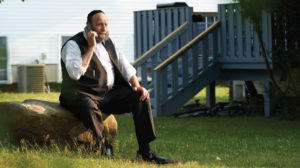The Analyst: Part IV


“I never realized how much satisfaction could come from a relationship”
Mother: I think Jack will have much more success dating now that he has stronger relationship skills.
Father: I feel like Jack has a little more humility, and sees people as more than just tools in his life.
Jack: I hope people will still like me once they really get to know me.

“Let’s say you’re in a restaurant,” I explain. “One girl orders lasagna every time. Another girl orders the most exotic thing on the menu. The lasagna girl is more practical, less open.
“This is not about good vs. bad,” I remind him, “just about learning about the other person so that you can relate to them better [When relating to others, the goal is simply to understand them]. Keep the personality types in mind and try to discover how much of each trait someone has. A girl’s job choices can tell you a lot about her personality.”
“So a more open girl might have a creative field, like interior decorating,” he ventured. “A less open girl might be an accountant or something.”
“Great. Once you determine their personality, you can gear your conversation toward their personality. So let’s say you’re discussing Chanukah parties….”
“I guess the decorator would be interested in the tablescape and the accountant would be more interested in the technicalities.”
For homework, Jack was to choose three family members, study them to determine their personality traits, and record the clues that led to his conclusions.
“I asked them about the Chanukah parties they attended,” he reports. “My sister told me about the hazelnut praline donuts vs. the peppermint donuts, so she’s more open. My brother complained about how late the party started and ended, so he’s more practical.”
The next week he has to take this assignment further: discover something others enjoy or a need they have, then do something for them that they’ll appreciate. Jack struggles to come up with ideas. “I guess I don’t know anyone well enough yet,” he says.
“What about your mother? What does she like?”
“Well…” He’s stumped. “She hates when the kitchen is messy,” he says finally. “She gets really edgy when the cleaning help doesn’t take out the garbage in the evening. I could take it out if I notice it happening.” He pauses. “I guess that’s what you’re saying — it’s my job to notice.”
Jack shares that he’s started visiting his elderly grandfather on Shabbos afternoons. “I used to avoid it,” he admits. “He’s old, he moves slowly, it’s so hard to make conversation with him. But my mother’s been pushing me to volunteer for different causes, she thinks it’s important for me to ‘build my giving muscles.’ ” He can’t resist rolling his eyes.
“But you know what?” The contemplative look I see on Jack’s face is new. “I learned some interesting things about my grandfather’s life. I never realized….” He hesitates. “I never realized how much satisfaction could come from a relationship.”
Bring it Home
Here are some tips that will help you get to know other people, understand them, and give to them:
-Use your body language to show interest.
-Listen carefully to the information they volunteer (free points) and ask questions that will give you greater insight.
-Give to them based on their preferences, not your preferences.
-Gauge other people’s interest level based on their body language.
-Consider the context of their personalities to help you understand them better.
(Originally featured in Family First, Issue 680)
Oops! We could not locate your form.








